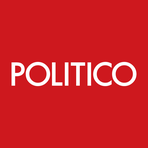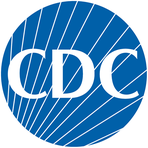The Health Care Battlefield: Project 2025 and Its Implications
February 28, 2025, 11:05 pm

Location: United States, District of Columbia, Washington
Employees: 501-1000
Founded date: 2007

Location: United States, Georgia, Atlanta
Employees: 10001+
Founded date: 1946
In the ever-shifting landscape of American politics, health care remains a battleground. The recent emergence of Project 2025 has reignited debates over the future of health care in the United States. This initiative, linked to former President Trump, aims to reshape health policies, often under the guise of efficiency and cost-cutting. However, the implications of these changes could be profound, potentially affecting millions of Americans.
Project 2025 is not just a plan; it’s a blueprint for a new era in health care. It’s a roadmap that promises to cut costs but risks leaving many without coverage. The Heritage Foundation, a conservative think tank, has crafted this document, which outlines sweeping changes to Medicaid, Medicare, and other federal health programs. The irony? Trump claims ignorance of the project, yet his administration's actions mirror its recommendations closely.
The plan proposes state flexibility to impose premiums and work requirements for Medicaid beneficiaries. This could lead to a surge in the uninsured population, particularly among low-income and disabled Americans. It’s like building a fence around a lifeboat—some may drown while others are left clinging to the edges. Critics argue that these measures don’t directly alter eligibility but create barriers that ultimately ration care.
As the Biden administration expanded Medicaid coverage, Project 2025 aims to roll back these gains. Congressional Republicans are contemplating budget cuts that could trim hundreds of billions from Medicaid over the next decade. The stakes are high. The safety net that millions rely on is at risk of fraying.
The project also seeks to expand access to health plans that skirt the Affordable Care Act’s consumer protections. While this may sound appealing—more choices and lower premiums—consumers could face hidden costs. It’s a classic case of “buyer beware.” The allure of lower prices may come with a hefty price tag in terms of coverage.
One of the most contentious aspects of Project 2025 is its call to halt Medicaid funding for Planned Parenthood. This organization plays a crucial role in providing health care services to women across the country. The proposed cuts could jeopardize access to essential services, particularly for those in underserved communities. It’s a move that could echo through the lives of countless women and families.
The administration’s efforts to erase terms like “equity” and “gender identity” from federal documents are alarming. These actions have far-reaching consequences, hampering access to health care for marginalized groups. The global gag rule, reinstated under Trump, restricts federal funds for organizations that provide information on abortion. This policy has a chilling effect, stifling vital health services worldwide.
The ramifications extend beyond borders. In countries like Zambia and Turkey, health organizations have been forced to remove critical information from their resources. This isn’t just a political maneuver; it’s a public health crisis in the making. The loss of information can lead to increased rates of unintended pregnancies and maternal health issues.
The project’s impact on transgender rights is equally concerning. An executive order banning federal funds for transition-related care for minors signals a retreat from progress. The move to recognize only two sexes in federal documents is a step backward for LGBTQ+ rights. It’s a denial of identity that could have devastating effects on mental health and access to care for transgender individuals.
Advocacy groups are mobilizing against these changes. They argue that the policies outlined in Project 2025 are discriminatory and pose barriers to necessary medical care. Legal challenges are mounting, as families and individuals seek to protect their rights and access to health services. The fight is far from over.
The administration’s approach to health care is not just about policy; it’s about power. The narrative of cutting waste and fraud is appealing, but the execution is flawed. Critics argue that a more nuanced approach, one that collaborates with agency officials, could yield real savings without sacrificing care. Instead, the current strategy resembles a “slash and burn” method, risking the integrity of government services.
Public sentiment is shifting. Polls indicate that nearly 60% of voters view Project 2025 unfavorably. The administration may be underestimating the backlash against its health care agenda. As the public becomes more aware of the potential consequences, support for these policies may wane.
In the grand scheme, Project 2025 is more than a policy initiative; it’s a reflection of a broader ideological battle. It’s a clash between visions of health care as a right versus a privilege. The stakes are high, and the outcomes will shape the future of American health care for generations to come.
As the dust settles, one thing is clear: the fight for health care is far from over. Advocacy groups, lawmakers, and citizens must remain vigilant. The battle lines are drawn, and the consequences of this struggle will resonate long after the policies are enacted. The future of health care hangs in the balance, and it’s up to the American people to ensure that it remains accessible and equitable for all.
Project 2025 is not just a plan; it’s a blueprint for a new era in health care. It’s a roadmap that promises to cut costs but risks leaving many without coverage. The Heritage Foundation, a conservative think tank, has crafted this document, which outlines sweeping changes to Medicaid, Medicare, and other federal health programs. The irony? Trump claims ignorance of the project, yet his administration's actions mirror its recommendations closely.
The plan proposes state flexibility to impose premiums and work requirements for Medicaid beneficiaries. This could lead to a surge in the uninsured population, particularly among low-income and disabled Americans. It’s like building a fence around a lifeboat—some may drown while others are left clinging to the edges. Critics argue that these measures don’t directly alter eligibility but create barriers that ultimately ration care.
As the Biden administration expanded Medicaid coverage, Project 2025 aims to roll back these gains. Congressional Republicans are contemplating budget cuts that could trim hundreds of billions from Medicaid over the next decade. The stakes are high. The safety net that millions rely on is at risk of fraying.
The project also seeks to expand access to health plans that skirt the Affordable Care Act’s consumer protections. While this may sound appealing—more choices and lower premiums—consumers could face hidden costs. It’s a classic case of “buyer beware.” The allure of lower prices may come with a hefty price tag in terms of coverage.
One of the most contentious aspects of Project 2025 is its call to halt Medicaid funding for Planned Parenthood. This organization plays a crucial role in providing health care services to women across the country. The proposed cuts could jeopardize access to essential services, particularly for those in underserved communities. It’s a move that could echo through the lives of countless women and families.
The administration’s efforts to erase terms like “equity” and “gender identity” from federal documents are alarming. These actions have far-reaching consequences, hampering access to health care for marginalized groups. The global gag rule, reinstated under Trump, restricts federal funds for organizations that provide information on abortion. This policy has a chilling effect, stifling vital health services worldwide.
The ramifications extend beyond borders. In countries like Zambia and Turkey, health organizations have been forced to remove critical information from their resources. This isn’t just a political maneuver; it’s a public health crisis in the making. The loss of information can lead to increased rates of unintended pregnancies and maternal health issues.
The project’s impact on transgender rights is equally concerning. An executive order banning federal funds for transition-related care for minors signals a retreat from progress. The move to recognize only two sexes in federal documents is a step backward for LGBTQ+ rights. It’s a denial of identity that could have devastating effects on mental health and access to care for transgender individuals.
Advocacy groups are mobilizing against these changes. They argue that the policies outlined in Project 2025 are discriminatory and pose barriers to necessary medical care. Legal challenges are mounting, as families and individuals seek to protect their rights and access to health services. The fight is far from over.
The administration’s approach to health care is not just about policy; it’s about power. The narrative of cutting waste and fraud is appealing, but the execution is flawed. Critics argue that a more nuanced approach, one that collaborates with agency officials, could yield real savings without sacrificing care. Instead, the current strategy resembles a “slash and burn” method, risking the integrity of government services.
Public sentiment is shifting. Polls indicate that nearly 60% of voters view Project 2025 unfavorably. The administration may be underestimating the backlash against its health care agenda. As the public becomes more aware of the potential consequences, support for these policies may wane.
In the grand scheme, Project 2025 is more than a policy initiative; it’s a reflection of a broader ideological battle. It’s a clash between visions of health care as a right versus a privilege. The stakes are high, and the outcomes will shape the future of American health care for generations to come.
As the dust settles, one thing is clear: the fight for health care is far from over. Advocacy groups, lawmakers, and citizens must remain vigilant. The battle lines are drawn, and the consequences of this struggle will resonate long after the policies are enacted. The future of health care hangs in the balance, and it’s up to the American people to ensure that it remains accessible and equitable for all.
